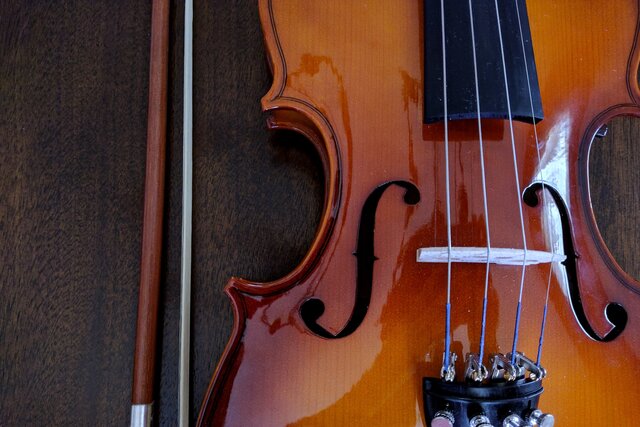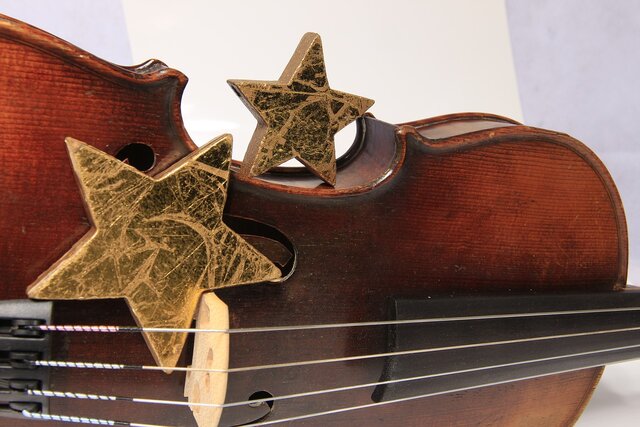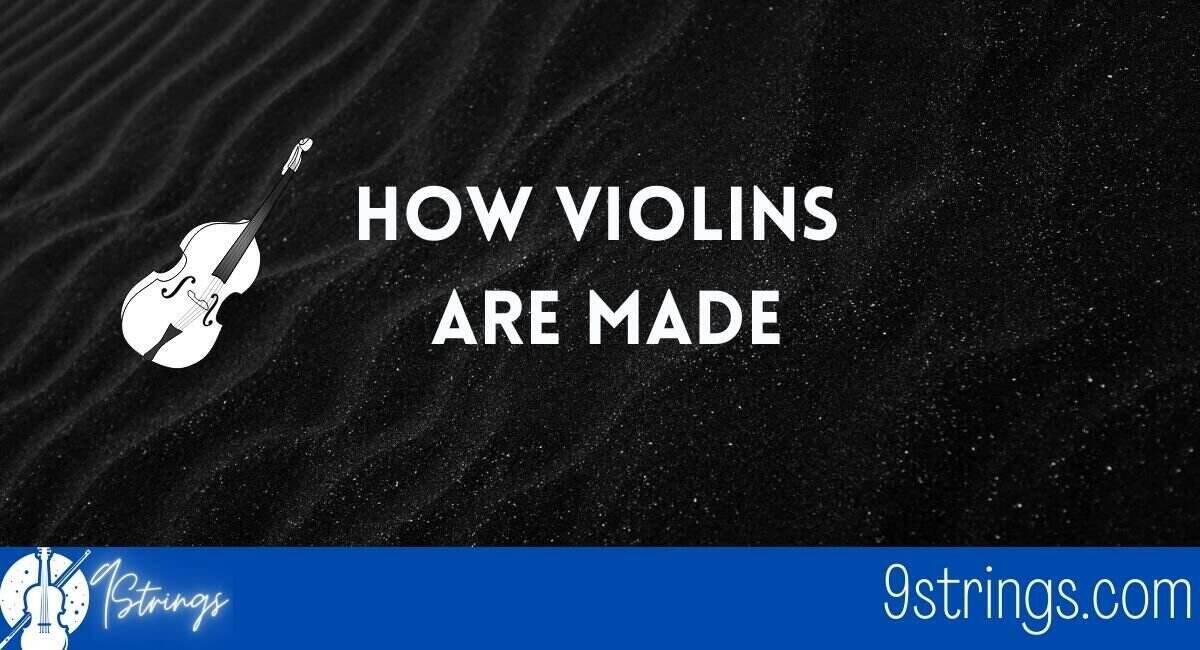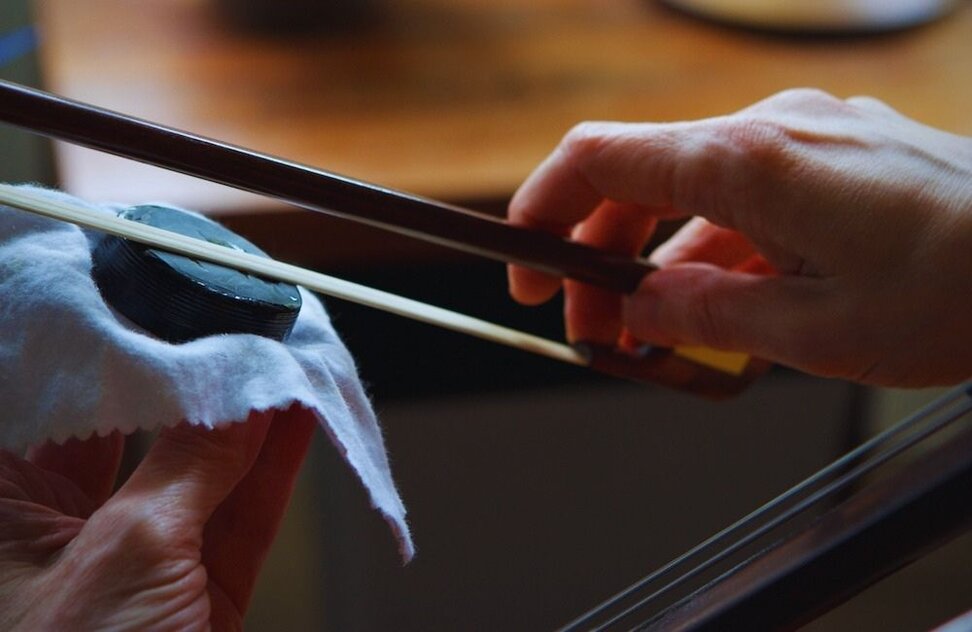Violin is a chordophone which is made of wood. The string instrument has four strings to be played with a bow. It is the highest pitched instrument that is used in western music. But what are the things to consider when choosing violin strings? Is there any specification? How is the type of string going to benefit my music? The writing will be answering these common queries and helping readers to choose the right violin strings for themselves.
Violin Strings

Violin has 4 strings that are made from different kinds of materials such as nylon, steel, or sheep intestine. The four strings of a violin run from the tailpiece that is attached to the base and continues parallel to the fingerboard. The strings do connect to a peg box which is located at the top of this instrument. In a violin, the bridge helps hold the four strings in accurate places, and the tension necessary to produce vibration is maintained by pegs.
Things to Be Considered
While choosing the type of violin string, it is necessary to know and understand strings’ abilities, limitations, and features. One musician may also need to understand what fits his genre best. For beginners, the preference may also vary. Moreover, one should consider few things before choosing the type of string for him,
- Understanding of different kinds of violin strings
- Advantages of Strings
- Limitation of strings
- Level of learning
- Genre of music
- Budget or affordability
Understanding of Different Kinds of Violin Strings

Violin strings were generally made of Catgut which means sheep’s intestines. Catgut is prepared after the intestines are stretched, twisted, and dried. The strings were never made of cats’ intestines although many people believe so. In modern music, Gut strings are used in violin. Many types of strings were created later on,
Gut Strings
Gut strings are made by specialized string makers or large companies who make strings. This kind of string tends to hold the sound quality nice until it falls. It produces a warm and rich tone. For lower pitched gut strings, metal windings were also developed.
Steel Core Strings
For beginners, steel core strings are the best ones to use. Steel core strings stay in tune easier than other ones and this is why most of the students prefer using steel core strings. Steel core strings also respond quicker than gut strings and they produce a very bright and clear sound. Steel core strings are also affordable and have a long life. Many rock musicians prefer steel core strings since these have greater advantages.
Synthetic Core Strings
Synthetic core strings were introduced by the Thomastik-Infeld company with Dominant String Set. Synthetic core strings are made of Nylon or Perlon. These strings provide musicians warmer tones of gut strings having better stability. Synthetic core strings are the perfect union that brought a new edition to violin playing.
Advantages of Strings

Gut Strings
Gut strings deliver rich sound and produce overtones. These strings allow for different sound colors. Also, gut strings are available in a different number of tensions and kinds.
Steel Core Strings
Steel core strings deliver powerful and protected sound. The break in period is short. This kind of string has good stability. Steel core strings are easy to play and cheapest with a long lifespan.
Synthetic Core Strings
Synthetic core strings have various offers and options. These have better breaking capacity than gut strings. Synthetic core strings are cheaper than gut strings but have more benefits, such as an easier bow and better tuning capacity.
Limitation of Strings

Gut Strings
Plain gut strings that are heavier are inconvenient and difficult to play and fit into the peg box. It is found that gut strings are difficult to be tuned and lose tune easily. It takes a lot of time to break in. Wound gut strings have more instability to tune due to the differences in response. They require the use of oil to extend the life which increases the cost and reduces sensitivity. Gut Strings also have less volume than steel and synthetic strings. Gut strings are expensive and are affected by humidity. It is costly to have gut strings since it has a poor life span too.
Steel Core Strings
Steel core strings may have a tinny-sounding tone which can have a great impact. It has a less complex sound, and the cheaper metal strings may produce shrill sounds. It is difficult to make the vibrations with these strings. Also, steel core strings can deliver poorer sound compared to gut strings and synthetic core strings.
Synthetic Core Strings
The best quality synthetic core strings are very expensive where some of them have a poor lifetime. Users may need to buy these strings repeatedly, which increases the cost. Synthetic core strings lack the complexity of sound.
Level of Leaning
If a musician is looking for a colorful and warm sound, he may go for gut strings. Gut strings are going to hold the music nice for professionals. Gut strings are going to deliver sharper and loud sounds. If someone is intending to learn to play the violin, he does not require the best quality strings but those that are easy to play. The best one for learners is steel core strings which are going to allow one to play violin easily with a fast and clear response. Also, people who want more volume can use this type of string. If the low tension of gut strings is not reacting well, professionals can go for synthetic core strings. So, one must know his level of learning to choose the best strings for violin.
Genre of Learning
People who demand sharp volume and music should prefer gut strings. Musicians who desire folk and electrical music can use steel core strings. For modern music, synthetic core strings are going to be very useful. Also, musicians who intend to innovate should use synthetic core strings. When instruments require more articulation, musicians should use synthetic core strings.
Budget and Affordability

Gut strings are always the most expensive. If a musician is willing to get the advantages of gut strings, he needs to have a healthy budget. But musicians who are on a tighter budget can use synthetic core strings in exchange for gut strings. Those who want to play the violin at the most affordable price should get steel core strings which are cheaper than gut strings and synthetic core strings. Steel core strings are long lasting at the same time. So, people with a higher budget should go for gut strings. People who have budget limitations and greater demand can choose synthetic core strings. And, people who are willing to learn to play the violin at the cheapest rate should buy steel core strings.
While choosing the right violin strings, one should consider different views and measure the advantages and disadvantages. People must be known of their wants and needs so that they can be wise at the time of choosing the best violin string for themselves. At the same time, they should consider their affordability. They need to choose the right one according to their priorities.



